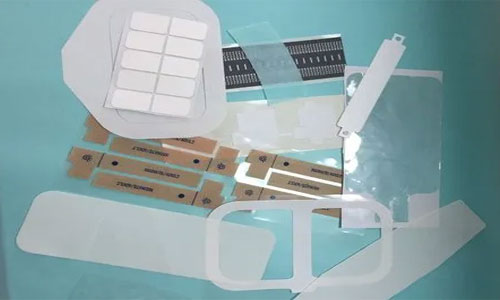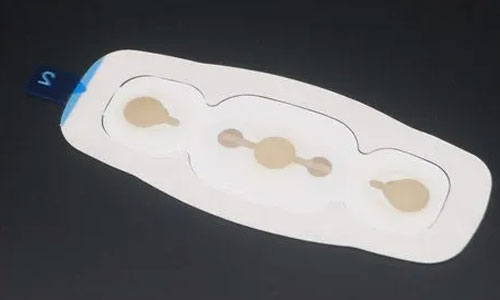
Die cutting medical supplies can present specific challenges due to the unique requirements of the industry. Some common challenges faced in die cutting medical supplies include:
1. Material selection: Medical supplies often require specific materials that are biocompatible, sterilizable, and resistant to chemicals. These materials may have different properties compared to traditional non-metallic materials, making die cutting more challenging.
Solution: Work with suppliers that specialize in medical-grade materials and have experience with die cutting in the medical industry. They can help identify suitable materials and provide guidance on die cutting techniques.

2. Precision and accuracy: Medical supplies need to meet strict tolerances and precise specifications to ensure functionality and safety. Achieving accurate and consistent cuts in small and intricate components can be challenging.
Solution: Use high-quality die cutting equipment and precision tooling. Regular maintenance and calibration of the equipment are essential to ensure precise cuts. Implementing inspection and quality control processes can also help identify and address any issues with accuracy.
3. Cleanliness and contamination control: Medical supplies must be manufactured in clean and controlled environments to prevent contamination. Traditional die cutting processes can generate debris and particulate matter that can compromise the cleanliness of the final product.
Solution: Implement cleanroom die cutting techniques and procedures. This may include using cleanroom-compatible materials, ensuring proper cleaning and maintenance of equipment, and implementing measures to minimize airborne particles during the die cutting process.
4. Adhesive challenges: Many medical supplies require adhesive components, such as tapes or adhesive-backed components. Achieving consistent adhesive application and bonding can be challenging during die cutting.
Solution: Work closely with adhesive suppliers to identify suitable adhesive materials and application methods for die cutting. Incorporating adhesive transfer tapes or using precise adhesive dispensing equipment can help ensure consistent bonding during die cutting.
5. Validation and regulatory compliance: Medical supplies must meet stringent regulatory requirements, such as those set by the FDA. Compliance with these regulations extends to all aspects of the manufacturing process, including die cutting.
Solution: Ensure that the die cutting process complies with relevant regulatory requirements, such as ISO 13485 for medical device manufacturing. Documenting process controls, implementing validation procedures, and maintaining proper documentation can help demonstrate compliance during audits or inspections.
By addressing these challenges and implementing appropriate solutions, die cutting medical supplies can meet the strict requirements of the industry and ensure the production of high-quality and safe products. Collaboration with experienced suppliers and adherence to industry-specific standards play a crucial role in achieving success in die cutting medical supplies.
Here are the topics that we’ll cover in this complete guide Rotary Die Cutting in Industrial Applications Section 2: Categories of Materials in Die Cutting:
2.1 Plastics: Types, Applications, and Die Cutting Considerations
2.2 Non-Metallic Materials: Characteristics and Die Cutting Applications
2.4 Paper Products: Die Cutting Techniques and Applications
2.5 Neoprene, Film, and Vinyl: Die Cutting Techniques and Applications
2.6 Automotive Components: Die Cutting Solutions for Efficient Production
2.7 Electronics: Die Cutting for Precision and Performance
2.8 Non-Wovens: Die Cutting Techniques for Enhanced Efficiency
2.9 Chipboard, Foil, and Corrugated Materials: Die Cutting Considerations
2.10 Fishpaper, Thermal, and Fiberglass: Die Cutting Techniques and Applications
2.11 Digital Substrates: Die Cutting for Advanced Printing Technologies
Contact: Pamela
Phone: +86 189 6365 3253
E-mail: info@industryprocess.com
Whatsapp:+86 189 6365 3253
Add: Yajing Industrial Park, No. 59 Shuangjing Street, Weiting Town, Suzhou Industrial Park
We chat
